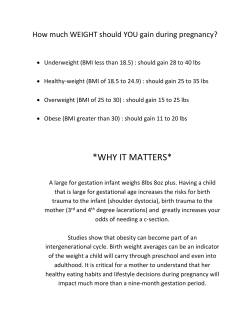
VIBROBLOCK INSTALLATION ®
VIBROBLOCK® INSTALLATION Note the angle setting of the VibroBlock® to be replaced, before removal. When shipped from stock, unless otherwise specified, each VibroBlock Vibrator is equipped with the following total number of springs of the correct color and MUST be converted to be identical to the replaced vibrator. White VB-6L 4 VB-12L 2 Red Green 2 2 VB-16L 2 2 VB-32L 28 Blue Spring Clamp Screw Length Clamp Screw Torque Mtg. Bolt Torque 2 ½ 24 in. lbs. 90 in. lbs. 3/4 60 in. lbs. 55 ft. lbs. 1-1/4 90 in. lbs. 100 ft. lbs. 1-1/4 90 in. lbs. 100 ft. lbs. 2 Armature air gap settings are important, usually .047 inch for use in feeders, .06 for use in tracks and .030 for VB6 rails. Excess gap will cause high current and inadequate vibration. During assembly, a plastic spacer must be used on both clamping surfaces of the spring. See chart above for proper screw torque. MOST problems are caused by loose screws or screws which are too long and bottom out in the screw hole or protrude through the end plate and touch the coil. On feeders, a VibroBlock® can be installed tilted backwards or reversed. The protractor end must face the feeder base casting and all VibroBlocks® set at the same angle and direction. The VibroBlock® cord MUST point in the same direction as the replaced unit for proper phasing. After assembly, a simple test can be performed by tapping the feeder bowl or track horizontally on the end with a plastic hammer. Vibration should be felt, much like a tuning fork. Loose screws or screws which are too long will cause the unit to feel dead. A further test can be made by listening for any noise when operating under power. The feeder or track should be very quiet in operation when empty. The feeder bowl mounting screws must be securely tightened. If used, the PET-1A Vibration Adjustment Transducer (Red Body) has two possible settings. One setting is very sensitive in adjustment and incorrect. To correct, adjust to full vibration, then continue to turn in same direction. Vibration should smoothly decrease. This is the correct setting. If used, the TR2000 Transducer must be mounted so that the cord points in the same direction as the vibrator cord. At normal feed rate, the meter current (Amps) reading should not exceed the following: VBF-12L Feeder VBF-16L VBF-20L VBF-20HD VBF-24L VBF-24HD 1.0 2.0 2.5 4. 3.5 6.0 VBF-31L VBF-31LHD Tracks using VB-12 Vibrators, Allow for each vibrator Tracks using VB-16 Vibrators, Allow for each vibrator 4.5 7.0 0.5 1.0 If properly assembled, dead spots in feeder bowl can be corrected by moving tuning weights to the area of the dead spot. Our “Dynamic Bowl Balancer” is a simple device available from stock and assists with balancing and troubleshooting. Slow or dead spots in a track are usually caused by incorrect angle settings. The entrance end VibroBlock® is usually set at a higher angle (10 -15 degrees) than the exit end VibroBlock® (0 10 degrees), although there are exceptions. Carefully note the angle of the VibroBlock® to be replaced. Covers or side rails that are too tight around the parts being fed can cause a slow or dead spot. If spring breakage is experienced on tracks, interchangeable composite springs are available to correct the problem. For new applications, call for our VibroBlock® Catalog (Instruction Pages 8 and 9 can be faxed). Also, ask for our video for new track construction. Preset torque wrenches are available from stock and are recommended for spring clamp screws and mounting screws Spring Clamp Screw Spring Clamp Bars End Plates-Note Protractor End Plastic Spacers On Both Sides Of Springs Mounting Bolt Armature Color Coded Springs Measure Gap Between Coil And Armature THE ARTHUR G. RUSSELL COMPANY, INCORPORATED 750 Clark Avenue - P.O. Box 237 Bristol, Connecticut 06011-0237 Telephone 860-583-4109 - Fax 860-583-0686 Email: agr@arthurgrussell.com 1402
© Copyright 2025





















![ESC SUPPORT URUKAY H0450-S [ ]](http://cdn1.abcdocz.com/store/data/000418148_1-29affb4fd6654275a4ad1a70e931e3c1-250x500.png)